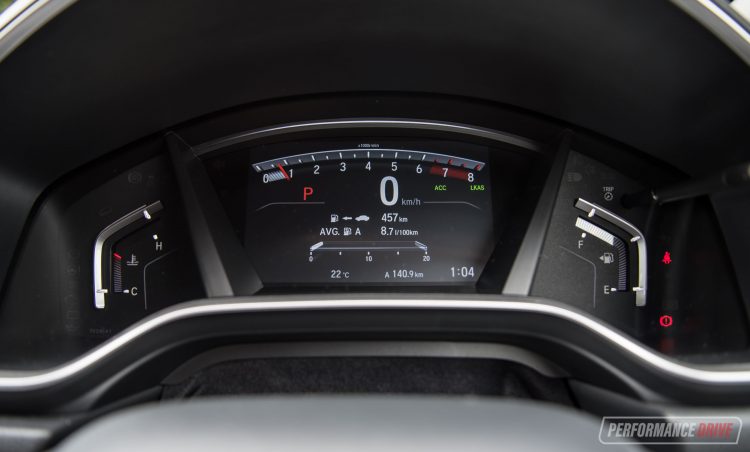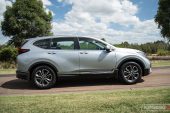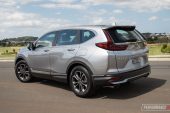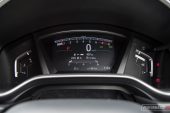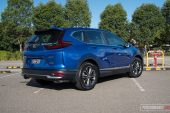The Honda CR-V has been the SUV of choice for many growing families for the past 25 years. 2021 brings with it a freshened lineup, minor design changes, and a more comprehensive feature list for the practical and versatile medium SUV.
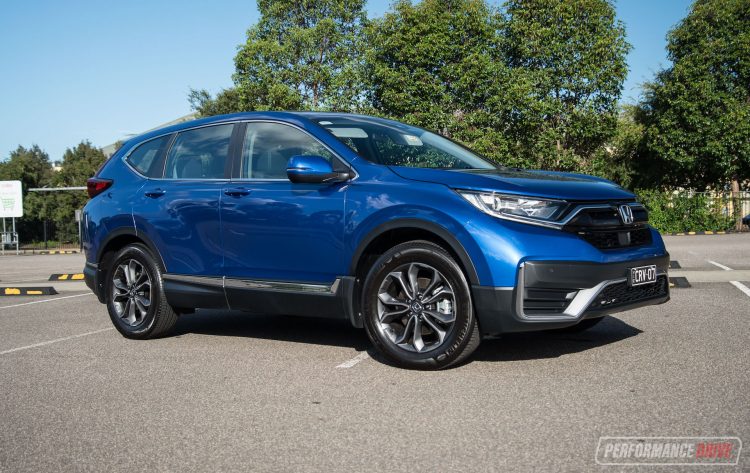
In its fifth generation, the Honda CR-V covers many needs. You can get it with five seats or seven seats, 2.0 petrol or 1.5 turbo-petrol, and front-wheel drive or all-wheel drive. The range goes from Vi, then VTi, VTi X, VTi L, and at the top, VTi-LX. Seven seats are available in the VTi and VTi-L variants.
The CR-V goes up against some tough big sellers like the Toyota RAV4, Mazda CX-5, and Nissan X-Trail. Here, we have our hands on the VTi X FWD and the VTi L AWD. Prices begin at $31,300 for the base Vi, and peak at $48,500 (excluding on-road costs). These are some very attractive prices compared with some equivalent-spec rivals.
2021 Honda CR-V VTi X – THE SPECS
[column width=”47%” padding=”6%”]Engine: 1.5-litre turbo four-cylinder
Output: 140kW@5600rpm / 240Nm@2000-5000rpm
Transmission: CVT automatic
Drive type: Four-wheel drive
Wheels: F & R: 18×7.5, 235/60
ANCAP: Five stars
Tare weight: 1596kg
Power-to-weight: 11.4:1 (kg:kW)
Official fuel economy: 7.3L/100km
Economy during test: 8.2L/100km
Fuel capacity/Type: 57L/91 RON[/column] [column width=”47%” padding=”0″]Power efficiency: 19.17kW:L/100km
0-60km/h: 4.15 seconds*
0-100km/h: 8.34 seconds*
60-110km/h: 5.67 seconds*
1/4 mile: 16.20 seconds at 143.0km/h*
Max acceleration: 0.709g
100-0km/h braking: 3.06 seconds at 39.31 metres*
Max deceleration: -1.075g
Decibel at idle: 42*
Peak decibel at 60-100km/h: 79*
Priced from: $37,000[/column][end_columns]
* Figures as tested by PerformanceDrive on the day. Factory claims may be different
2021 Honda CR-V VTi X & VTi L– THE PACKAGE
The humble CR-V has had the same recognisable exterior design for a number of years now. But the 2021 facelift sees some minor body modifications to keep it modern. There are new chrome accents (still heavy on the chrome), a redesigned blackout front grille and front and rear bumpers, new tinted LED taillight lenses, and fresh alloy wheels. It’s not a pioneer in innovative design, more an attractive and safe look that many family SUV buyers prefer to choose.
The interior dazzles more than the exterior. Drivers are fronted with a semi-digital instrument cluster, a 7.0-inch multimedia touch-screen fitted with Android Auto and Apple CarPlay, and some elegant brushed chrome elements throughout. Though, the touch-screen could be bigger and have a more modernised menu layout. But, always in Hondas, it is a familiar and super-simple layout to operate. The interior doesn’t overwhelm, yet feels contemporary. Soft-touch materials are of a noticeably premium quality and feel tightly constructed. Nothing wobbles.
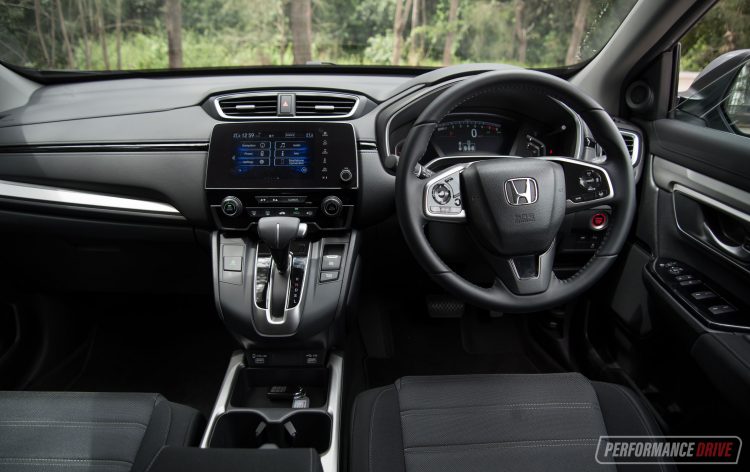
The gearstick sits high for easy reach and makes way for large storage areas, decent-sized cup holders, and a wireless phone charging area (in VTi LX model only) down below. The front row offers huge amounts of leg and shoulder space to make it feel like a larger SUV than it is. Thanks to appropriately bolstered and comfortable seats, you also get that high-riding feeling.
In the back, there is also plenty of room for growing families, five adults, child seats or a camping gear. A flat floor, rear air vents and USB chargers help to make CR-V an excellent choice when it comes to practicality. And the option of a third row increases its usability to larger families.
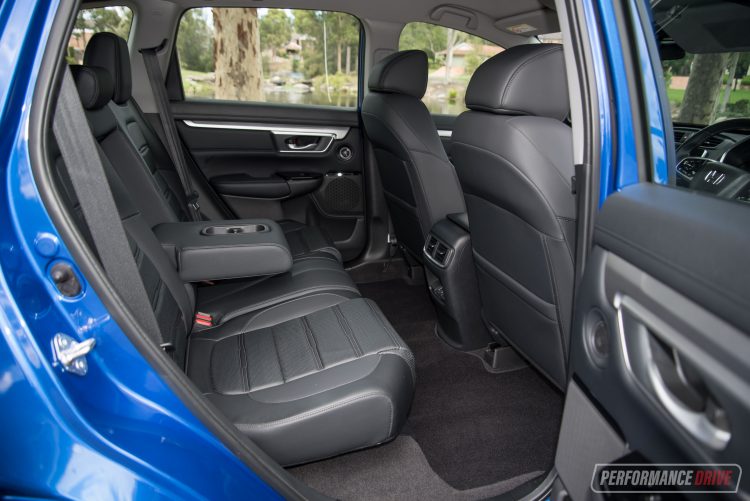
Very important in this car category is boot size. Comparing to similarly-priced medium SUVs, the Toyota RAV4 fits 547 litres of luggage, the Mitsubishi Outlander squeezes in 477 litres, the Nissan X-Trail impresses with 565 litres, and the Subaru Forester fits 498L. The CR-V comes in about average at 522L. It is a very usable space thanks to a low boot lip, and there’s auto power tailgate with a kick sensor on VTi X models and above. If you need more space, lying the second row flat expands the volume to 1084L. This can be actioned via handles in the boot area.
No matter which CR-V variant you choose, all models come standard with dual-zone climate control, auto dipping (when reversing) and folding side mirrors, the 7.0-inch multimedia screen, rear-view camera, LED taillamps, a full-sized alloy spare wheel, and tyre pressure sensors. We recommend any model above the Vi, as the Vi does not come with the Honda Sensing driver assisted technologies like forward collision emergency braking.
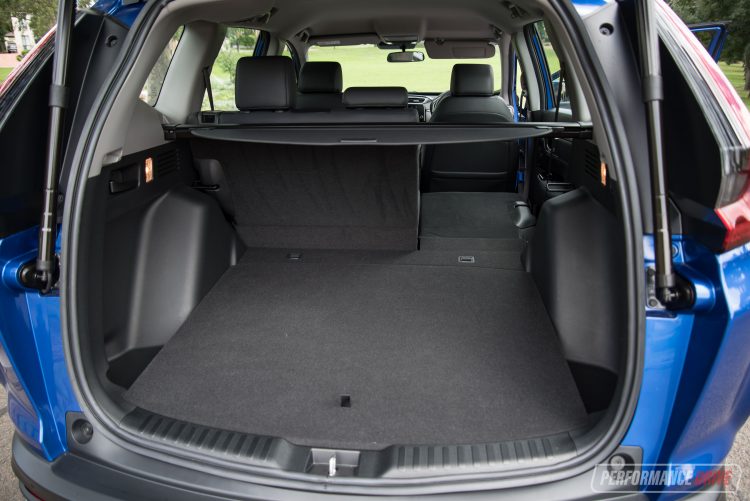
Moving up to the VTi, there are more crucial features as standard – for only $2900 more. Like distance-controlled cruise control, lane departure warning and active assist lane keeping aid, a better eight-speaker sound system (up from four speakers), proximity keyless entry with push button start, and the much better 1.5L turbo engine.
The VTi X is probably the best all-rounder if you don’t need AWD. It comes with a side-view lane changing camera, front and rear parking sensors, sat-nav, 18-inch alloys, auto dipping high beam, and a power tailgate. VTi L adds full LED headlights, wireless phone charging, all-wheel drive, leather seats and heated front seats.
At the top, the VTi-LX picks up 19-inch alloys, a power adjustable driver’s seat, and a panoramic sunroof. We’d love to see a bigger touch-screen, as mentioned, as well as the option for a hybrid or other fuel-saving engine, and rear collision mitigation.
Honda now offers a generous warranty scheme; a five-year, unlimited kilometre package. Servicing is required every 10,000km or 12 months. At the time of writing, all services to five years are capped at $312.
2021 Honda CR-V VTi X & VTi L – THE DRIVE
Concentrating on the more worthwhile 1.5-litre turbo engine that we have here, it sounds small and weak, but don’t let its size fool you. The pint-sized four-cylinder hurls out loads of go. It squeezes out an impressive 140kW of power and 240Nm of torque. Our testing revealed a 0-100km/h time of 8.34 seconds, which is actually very good for this class and at this trim level point.
Heavily due to the boring CVT auto gearbox, the engine can sound thrashy and harsh when the going gets tough. But ignoring the sound, it gets going remarkably eagerly. It really has no trouble zipping the mid-sizer up to speed in the city or overtaking on the freeway. And the benefit of having such a small capacity engine means fuel consumption is low for a petrol engine, comparatively.
During our more demanding testing over two lots of 500km in both variants, we achieved an average fuel consumption of 8.2L/100km. Its official rating is not far off at 7.3L/100km in FWD form and 7.4L/100km in AWD setup. It’s a decent reading for a petrol engine, but the market is growing with hybrids and the like. When compared to them, this isn’t so impressive.
But we are sure it won’t be too long until Honda brings out its own fuel-saving alternative. Impressively, this engine does not require a minimum 95 RON fuel, which means that the price is kept low at the petrol bowser. If you require strong towing abilities, the CR-V is not the answer. The towing capacity is only 1500kg, braked.
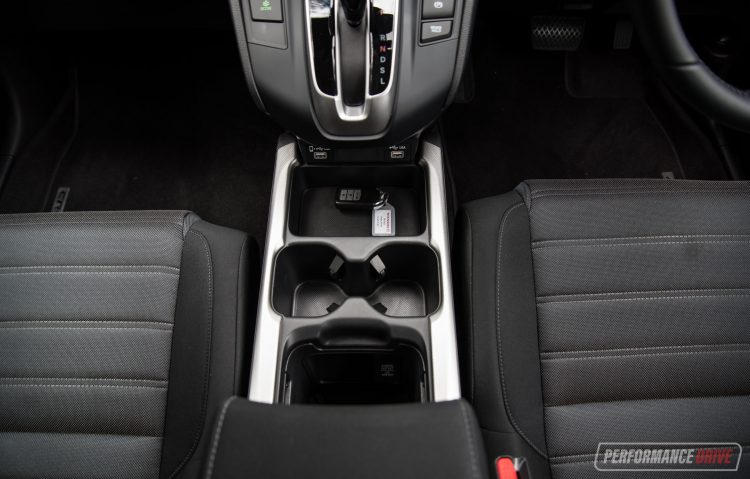
Driving on the road, the CR-V is one of the most composed medium non-luxury SUVs in this space. It absorbs bumps and potholes with absolute poise. It feels like it would never become disturbed, even over larger bumps. You can roll over speed humps fast and it seems to tackle them brilliantly, too. Executing corners can be done confidently, thanks to minimal body roll and lots of grip. Only, the all-wheel drive models do enhance stability further and they seem to possess less torque-steer.
Steering is light and realistic at slow speeds, and appropriately weighted at faster speeds to help keep it feeling grounded on the freeway. The biggest standout for me is the CR-V’s brakes. They feel ultra-strong and require the perfect amount of squeeze to progressively pull up like a chauffeur. It’s so easy to make it so there is no back and fourth jerking effect when coming to a dead stop quickly.
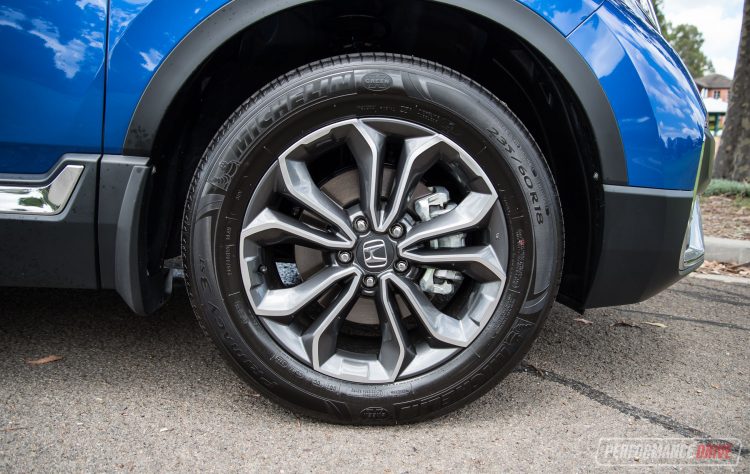
Front-wheel drive models are not going to do well off road, obviously. That’s why we did not take ours off the bitumen. Drivers benefit more from the high-riding SUV feel and the extra luggage space that comes with SUV shapes. But if you want to do some dirt roads and country adventures, the all-wheel drive will give you that extra traction.
2021 Honda CR-V VTi X & VTi L – THE VIDEO
2021 Honda CR-V VTi X & VTi L – THE VERDICT
The ever-dependable Honda CR-V for 2021 is not the most advanced medium SUV on the market, but most will love it because of its familiarity, ease of use, and competitive pricing. Forget the base model Vi – any model above it comes with all the necessities and safety features everyone should have in 2021.
We love the practical, versatile, and roomy interior, the option of seven seats, the high-quality materials used, and the 1.5L turbo engine. But it might fall short for some buyers that demand a better multimedia screen, a hybrid option, or an SUV that doesn’t just blend in with the rest.
[column width=”47%” padding=”6%”]PROS:
– 1.5L engine is small but willing and economical
– Easy to drive, as always from Honda
– Super-practical with space, with lots of storage and cupholders
– Interior feels strong and high in quality
– Great suspension and braking calibration
[/column] [column width=”47%” padding=”0″]CONS:
– No hybrid alternative
– Lacks boldness, and does nothing really special to turn heads
– CVT auto makes the engine sound a little thrashy when pushed
– Vi model and engine should be deleted[/column][end_columns]
As always, if you’re thinking about buying a new car don’t forget to click here to speak with our car buying specialists.

